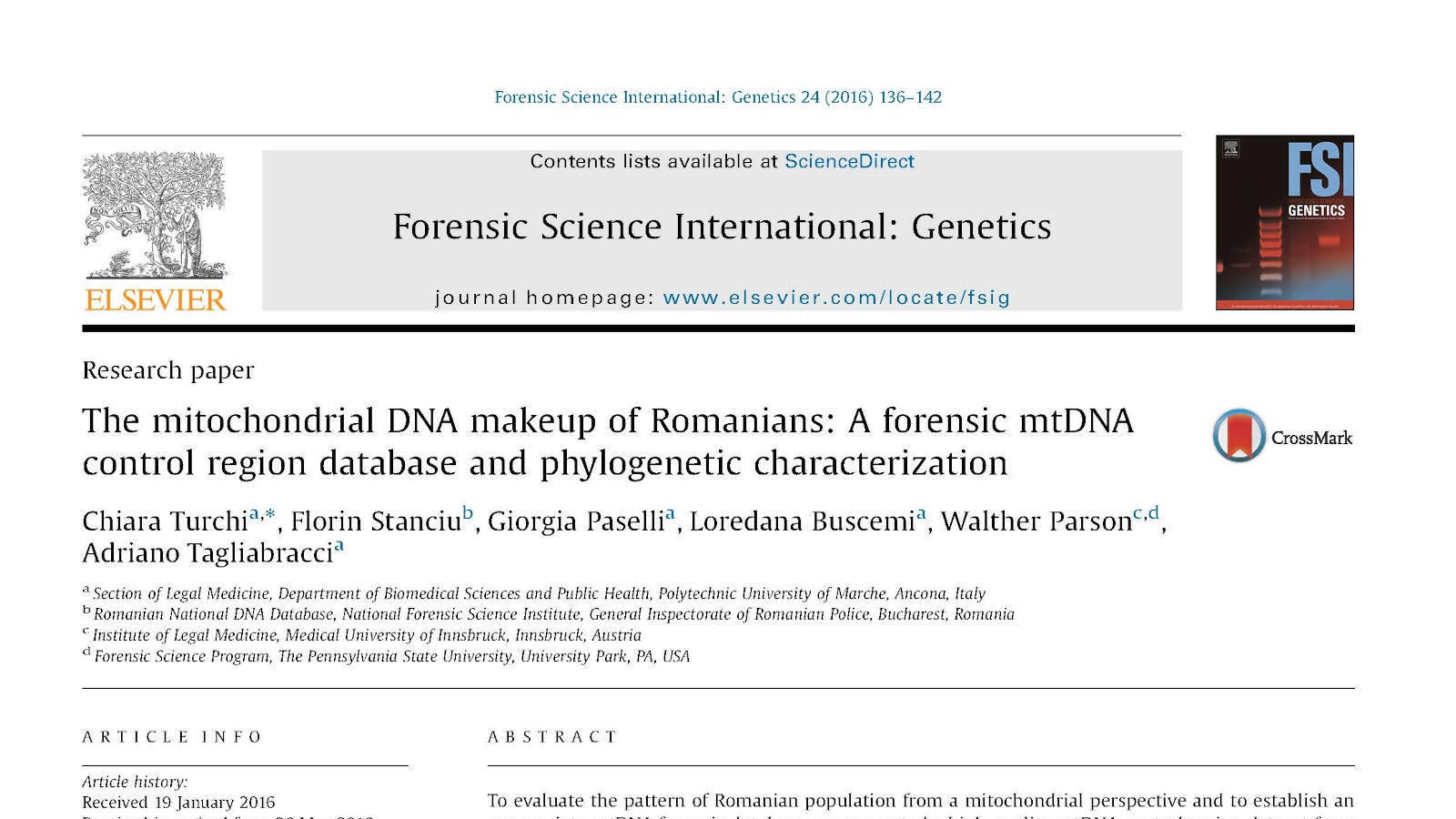Turchi C, Stanciu F, Buscemi L, Tagliabracci A, „mtGenome resolution of the two most common Romanian haplotypes R0 and X2e1b and evaluation of point heteroplasmy detection by massively parallel sequencing”, Poster at Haploid Markers 2016 – Update on DNA variation, 10th International Y Chromosome workshop • 7th International EMPOP meeting. Berlin, May 20-21, 2016.
Abstract:
In the last years has been largely demonstrated that massively parallel sequencing technologies (MPS) offers new possibilities for forensic genetics, both for the more information that may be obtained in a single experiment from unique samples by analyzing combinations of markers, both for the analytical cost-effectiveness. In particular, the full mitochondrial genome (mtGenome) sequencing using MPS has largely applied in the forensic context, as the throughput and sensitivity of the technology resulting in far more efficient data production than can be achieved via Sanger sequencing. Massively parallel sequencing of entire mtGenome increases the power of discrimination, allows more comprehensive heteroplasmy detection, as well as high phylogenetic resolution, with respect to sequence information recovered from the solely control region (CR). Considering this limited range, some samples share identical haplotypes, especially the most frequent mtDNA CR types that are typical of different populations. In an original dataset of 407 Romanian sequences (Turchi C. et al, in press), collected from the general population belonging to four major historical regions Moldavia, Transylvania, Wallachia and Dobruja, we observed 277 (68%) distinct haplotypes of which 220 (79%) were unique. The most common haplotype 16519C, 263G, 315.1C, (haplogroup R0) was shared by twenty-five individuals (6%), while the second most common haplotype 16126C, 16189A, 16223T, 16278T, 16519C, 73G, 195C, 263G, 315.1C (haplogroup X2e1b) was shared by ten individuals (4%). In order to investigate the degree of variation inside these two clades, twenty-one samples were submitted to entire mtGenome sequencing using the Personal Genome Machine (PGM). In the same dataset, point heteroplasmic positions were observed at nine different sites (152Y, 185R, 214R, 225R, 235R, 16093Y, 16172Y, 16189Y and 16399R) in fifteen different samples. The ability to identify and utilize the discrimination potential of heteroplasmy will significantly enhance the value of mtDNA analysis in forensic casework, but at present this condition is commonly disregarded mostly due to the poor sensitivity of the Sanger sequencing in detecting low-level heteroplasmy. Several studies have been carried out recently regarding the threshold for heteroplasmy detection by MPS, being generally suggested that this methodology is more sensitive and accurate. To investigate the level of point heteroplasmy and estimate alleles quantification, fifteen samples showing PHP in the control region were submitted to mtGenome sequencing and the sequences obtained through the PGM are compared to those obtained by Sanger sequencing to determine heteroplasmy detection threshold with both technologies.
Download





